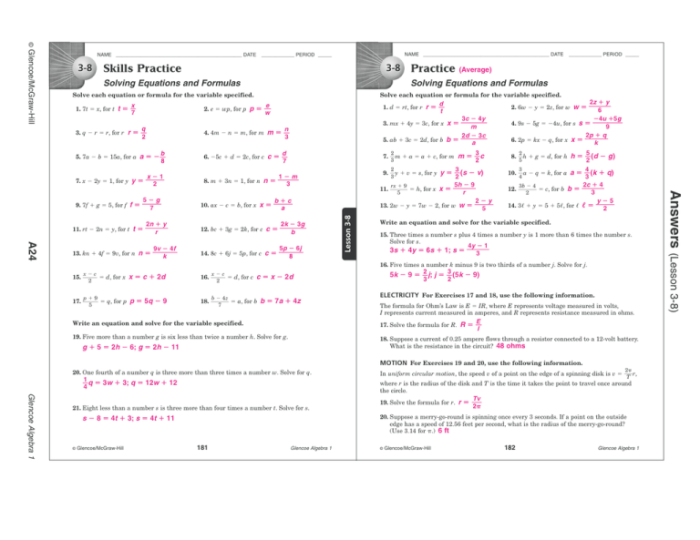The Glencoe Geometry Chapter 3 Answer Key provides a comprehensive resource for students seeking to master the fundamental concepts of circles, their properties, and their applications. This chapter delves into the intricacies of circles, equipping students with a solid foundation in geometry.
From defining key terms and theorems to exploring real-world applications and constructing geometric figures, this chapter offers a holistic approach to understanding circles. By engaging with the content and practicing the provided problems, students can develop a deep comprehension of this essential geometric shape.
Glencoe Geometry Chapter 3: Circles

Chapter 3 of Glencoe Geometry introduces the concept of circles and their properties. Understanding circles is crucial in geometry as they play a significant role in various mathematical applications.
Key Definitions and Theorems, Glencoe geometry chapter 3 answer key
Radius:A line segment that connects the center of a circle to any point on the circle.
Diameter:A line segment that passes through the center of a circle and connects two points on the circle.
Chord:A line segment that connects two points on a circle, but does not pass through the center.
Tangent:A line that intersects a circle at exactly one point.
Pythagorean Theorem:For a right triangle with legs a and b and hypotenuse c, a^2 + b^2 = c^2.
Properties of Circles:
- Symmetric about its center
- Congruent circles have equal radii
Applications of Circle Properties
Area:A = πr^2
Circumference:C = 2πr
Applications:
- Architecture: Arches, domes
- Engineering: Gears, bearings
- Design: Jewelry, logos
Proofs and Constructions
Methods of Proof:
- Direct proof
- Indirect proof
Constructions:
- Constructing circles
- Constructing tangents
Importance of Proofs:Proofs establish the validity of geometric theorems and contribute to mathematical understanding.
Practice Problems and Solutions
Problem:Find the radius of a circle with an area of 25π.
Solution:A = πr^2, so r^2 = 25, r = 5.
Common Mistakes:
- Using the circumference formula instead of the area formula
- Not squaring the radius to find the area
FAQs: Glencoe Geometry Chapter 3 Answer Key
What is the Pythagorean Theorem?
The Pythagorean Theorem states that in a right triangle, the square of the length of the hypotenuse (the side opposite the right angle) is equal to the sum of the squares of the lengths of the other two sides.
How do I find the area of a circle?
The area of a circle is given by the formula A = πr², where r is the radius of the circle.
What is the difference between a radius and a diameter?
The radius of a circle is a line segment that connects the center of the circle to any point on the circle. The diameter of a circle is a line segment that passes through the center of the circle and has endpoints on the circle.